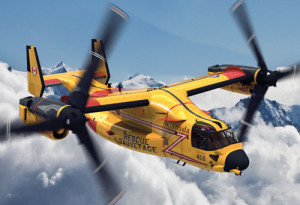When the Conservative government released the Canada First Defence Strategy in 2008, it include a commitment to deliver a new fleet of fixed-wing search and rescue aircraft to the Royal Canadian Air Force by 2015.
It appears the government might meet part of that commitment – sort of.
At the recent Air Force Outlook in April, RCAF officials confirmed that a much anticipated request for proposal will be issued in 2014, followed by a contract award in 2015. It’s not quite the actual aircraft, but it’s something worth acknowledging. Over a decade has passed since the FWSAR program was first announced as a “top priority” in 2003 and granted dedicated funding of $1.3 billion for 15 aircraft in 2004.
The program will likely be a test case for the criteria laid out in the government’s new Defence Procurement Strategy, announced in February. Just how the DPS and its requirements for value propositions, key industrial capabilities and technological benefits will affect the bids, though, remains to be seen.
First, the FWSAR program will a capability-based rather than platform-based procurement, meaning that in addition to aircraft performance specifications, companies will also have to provide basing solutions (including number and type of aircraft and personnel) to meet national search and rescue needs. Second, FWSAR is one of three capital procurement projects already operating under a dedicated secretariat, which could ease or complicate matters.
Earlier this year, Public Works and Government Services Canada, which will house a new dedicated defence procurement secretariat, released a source list of five companies that intend to submit proposal for the FWSAR replacement program: Airbus Defense and Space (formerly Airbus Military); Alenia Aermacchi; Bell Boeing; Lockheed Martin; and Embraer Defense and Security. Notably absent from the list was Viking Air, which had proposed a new version of the venerable CC-115 Buffalo.
Here are the five contenders:
Alenia Aermacchi C-27J Spartan
Team Spartan, as it has dubbed itself, consists of Finmeccanica subsidiary Alenia Aermacchi North America, General Dynamics Canada, DRS Technologies Canada and, just recently, Kelowna Flightcraft. Long considered the front-runner, the Spartan has been challenged about its ability to operate at lower speeds needed while performing aerial searches and operate on northern and soft airfields. It features a new Rolls Royce AE 2100-D2 engine and will be “missionized” to RCAF requirements.
Airbus Defense and Space C-295
The C-295 is a smaller and lighter airframe with better low-and-slow operating ability, though with less overall speed, that might handle softer airfields better but requires a longer take-off and landing runway. It features Pratt & Whitney Canada PW127G twin turboprop engines and includes among its team of Canadian partners, CAE (flight simulators and training), L-3 Wescam, Vector Aerospace and recently added Provincial Aerospace (in-service support).
Bell Boeing V-22 Osprey
Once considered a long shot due to its hefty ticket price, the tilt-rotor vertical take-off and landing Osprey has overcome its early operating issues and is now in its sixth year of multi-year production. Bob Carrese, vice president of business development for the V-22, has reminded Canadian audiences repeatedly that although it offers a smaller cabin for secondary cargo-carrying, the Osprey is the only solution that can perform both the search and the rescue and recovery functions with one aircraft.
Lockheed Martin C-130J Hercules
The four-engine aircraft might be more expensive to operate than any of its smaller competitors, but the C-130 is a trusted SAR aircraft in Canada, especially for longer operations over the North Atlantic and into the Arctic; of note, the U.S. Air Force has tailored the HC-130J for combat SAR. Lockheed Martin has partnered with Abbotsford-based Cascade Aerospace for the FWSAR project, part of a larger partnership under which Cascade serves as a heavy maintenance centre of excellence for the C-130s.
Embraer KC-390
A newly introduced wild card in the competition, the KC-390 is only on the verge of its first flight, likely in late 2014, according to Embraer officials at FIDAE in Chile in March. But the company expects to begin delivering its first production aircraft for the Brazilian Air Force by 2016. The twin-jet, medium-lift transport is probably more aircraft than the RCAF require for search and rescue, and it will likely be hampered by its current stage of development and higher operating costs. But it is an intriguing option.

